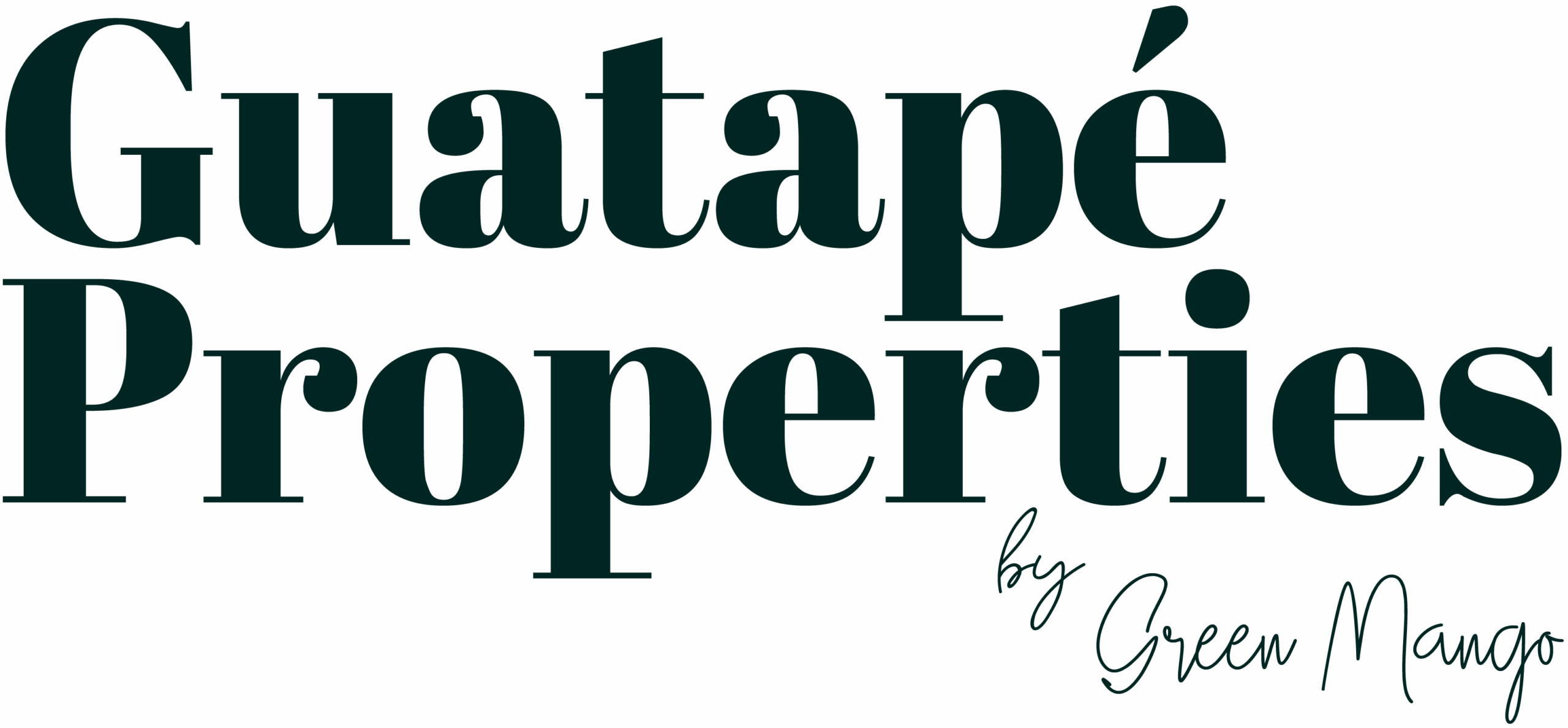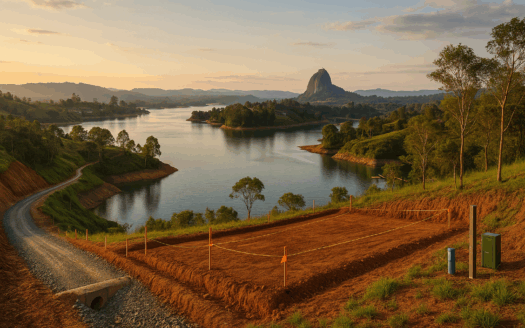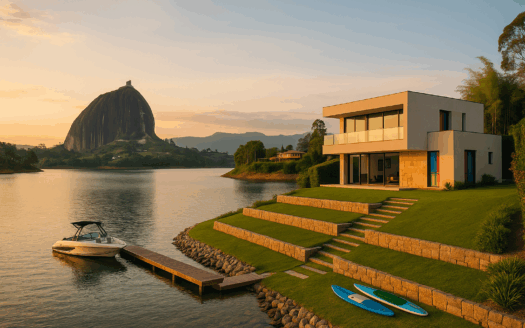How to Buy Property in Colombia: A Step-by-Step Guide
How to Buy Property in Colombia: A Step-by-Step Guide
If you’ve ever wondered how to buy property in Colombia this guide is for you. Buying property in Colombia presents an exciting opportunity for foreign investors, retirees, and anyone looking to own a piece of paradise. With its affordable real estate market, booming tourism industry, and picturesque landscapes, Colombia has become one of Latin America’s most attractive destinations for property buyers. However, purchasing property in a foreign country requires careful navigation of legal, cultural, and financial processes to avoid costly mistakes.
This guide is designed to provide you with practical insights, actionable advice, and critical warnings so you can confidently make informed decisions. From understanding the Colombian real estate market to navigating the legal requirements and maximizing your return on investment, this guide covers everything you need to know about how to buy property in Colombia.
Why Invest in Colombian Real Estate?
Colombia’s real estate market is increasingly appealing to international investors. Whether you’re looking for a vacation home, rental income, or a retirement property, Colombia offers unique advantages that set it apart:
1. Affordable Pricing
Compared to other popular Latin American destinations, Colombian real estate is significantly more affordable. For example, the average price of a two-bedroom apartment in Medellín is around $90,000 USD, while similar properties in Mexico or Chile can cost up to 50% more. Additionally, the cost of living is low, making it an attractive option for retirees and digital nomads.
2. Strong Rental Market
Tourism in Colombia is on the rise, with cities like Cartagena, Medellín, and Bogotá seeing record visitor numbers. Vacation rentals and short-term accommodations are in high demand, particularly in tourist-heavy areas like Guatapé, where occupancy rates for Airbnb listings often exceed 70% during peak seasons.
3. High Return on Investment (ROI)
Property values in key markets have consistently appreciated over the past decade. Medellín, for example, has seen an average annual property value increase of 7%. Investing in up-and-coming areas like Guatapé or Pereira offers even greater potential for growth as infrastructure and tourism expand.
4. Tax Incentives for Foreign Investors
The Colombian government has introduced various incentives to attract foreign investment, including tax benefits for eco-friendly developments and tourism-related projects. For investors focusing on sustainable real estate, these incentives can significantly boost profitability.
5. Infrastructure Improvements
Colombia has invested heavily in infrastructure projects, including new highways, airports, and metro systems. These developments have made previously hard-to-reach areas more accessible, driving up property values and opening up new investment opportunities.
6. Diverse Investment Options
From colonial homes in Cartagena’s historic district to modern apartments in Bogotá’s financial hub or lakefront villas in Guatapé, Colombia offers a wide range of property types to suit different tastes and budgets.
Practical Example
Maria, an investor from the U.S., purchased a lakefront property in Guatapé for $120,000 USD. She renovated it and listed it on Airbnb as a luxury vacation rental. Within the first year, she achieved a gross income of $24,000 USD, thanks to Guatapé’s booming tourism and her property’s prime location near the Piedra del Peñol.
How to Buy Property in Colombia:
Step 1: Research the Colombian Real Estate Market
Before diving into the Colombian property market, thorough research is essential. Each city and region in Colombia offers unique investment opportunities, and understanding the local market dynamics will help you make an informed decision. Here’s how to approach this step:
Understand Regional Differences
Colombia is a diverse country, and its real estate market reflects that. Here’s a breakdown of some of the most popular regions:
Bogotá: As Colombia’s capital, Bogotá is a financial and business hub. Properties here are ideal for long-term rentals due to consistent demand from professionals and students. The average price per square meter in Bogotá ranges from $1,200 to $2,000 USD, depending on the neighborhood.
Medellín: Known as the “City of Eternal Spring,” Medellín attracts expats and digital nomads, making it a hotspot for mid-term rentals. Popular neighborhoods like El Poblado and Laureles offer a blend of modern amenities and cultural charm.
Guatapé: This lakeside town is a gem for short-term vacation rentals. With its colorful streets, iconic Piedra del Peñol, and increasing tourism, Guatapé offers high rental yields. Lakefront properties here average $80,000 to $150,000 USD, with premium options exceeding $200,000 USD.
Cartagena: The historic walled city of Cartagena is perfect for luxury properties and boutique hotels. Vacation rentals in Cartagena often yield higher nightly rates due to its international appeal.
Track Market Trends
Use reputable platforms like Finca Raiz and Metro Cuadrado to monitor property listings and pricing trends. Pay attention to factors like infrastructure developments, which can significantly impact property values.
Practical Example
David, a Canadian investor, focused on Medellín’s El Poblado neighborhood. By purchasing a two-bedroom apartment for $120,000 USD and furnishing it for mid-term rentals, he earned an average of $1,800 USD per month, achieving a 12% annual ROI.
Step 2: Understand Legal Requirements
Colombia’s legal framework allows foreigners to purchase property with the same rights as citizens. However, the process involves specific legal steps and documentation:
1. Obtain a NIT (Tax Identification Number)
A NIT is mandatory for all property transactions in Colombia. This number is issued by the national tax authority (DIAN) and is used to track tax obligations. Foreign buyers must provide a valid passport and proof of residence to obtain a NIT. Partnering with a local attorney simplifies this process.
2. Verify Property Titles
Property title verification is one of the most critical steps in the buying process. Request a “Certificado de Tradición y Libertad” from the national registry to confirm that the property is free of liens, unpaid taxes, or ownership disputes. Hiring a trusted attorney ensures thorough due diligence.
3. Work with a Notary
In Colombia, all property transactions must go through a licensed notary. The notary’s responsibilities include verifying the legality of the transaction, ensuring all documents are signed correctly, and registering the sale with the national registry. Notary fees typically range from 0.5% to 1% of the property’s value.
Warning: Avoid Informal Transactions
Some sellers may attempt to bypass formal processes to save on fees or taxes. These shortcuts often result in legal disputes or financial losses. Always insist on formal contracts and complete documentation.
Step 3: Secure Financing
Once you’ve identified your target property, the next step is to determine how you will finance the purchase. Whether you plan to pay in cash or take out a mortgage, understanding your options is essential for a smooth transaction.
Mortgage Options for Foreigners
Foreigners can apply for mortgages in Colombia, but the process can be more complex than for local buyers. Most banks require proof of income, a good credit history, and a local guarantor. Interest rates typically range from 9% to 12%, depending on the bank and loan terms. Consult with financial institutions like Bancolombia or Davivienda to explore your options.
Exchange Rate Strategies
The Colombian peso’s fluctuations can significantly impact your buying power. Monitoring exchange rates and working with a currency exchange specialist can help you secure favorable rates. For example, timing your transfer when the peso weakens against your home currency can save you thousands of dollars on the purchase price.
Practical Example
Susan, a British investor, waited until the Colombian peso dipped to 5,000 COP per USD before transferring funds to purchase her property. By doing so, she saved over $5,000 USD on her $150,000 USD property purchase.
Warning: Understand Additional Costs
In addition to the purchase price, buyers should budget for closing costs, notary fees, and taxes. These typically add 3% to 5% to the total cost of the property. Be prepared to cover these expenses to avoid delays during the transaction.
Step 4: Conduct Due Diligence
Due diligence is one of the most critical steps when learning how to buy property in Colombia. Skipping this process can result in costly mistakes or legal issues down the line.
Verify the Property’s Legal Status
Ensure the property has a clear title and is free from liens, encumbrances, or unpaid taxes. Request the property’s “Certificado de Tradición y Libertad” from the national registry and review it with your attorney.
Inspect the Property
Conduct a professional property inspection to identify structural issues, maintenance needs, or hidden defects. This is particularly important for older properties, which may require significant repairs.
Warning: Be Aware of Zoning Restrictions
Some properties, especially those near lakes or national parks, may have zoning restrictions that limit renovations or commercial use. Verify zoning laws with local authorities before committing to a purchase.
Practical Example
John, a U.S. investor, purchased a vacation rental property in Cartagena without verifying zoning laws. He later discovered that short-term rentals were restricted in the area, forcing him to pivot to long-term leases at a lower ROI.
Step 5: Make an Offer and Close the Deal
Once you’ve completed your research and due diligence, it’s time to negotiate the purchase and finalize the transaction.
Negotiate the Price
In Colombia, negotiation is expected. Sellers often list properties at prices above their true market value, anticipating counteroffers. Work with a local agent to determine a fair price and negotiate effectively.
Sign the Sales Agreement
The sales agreement (“Promesa de Compraventa”) outlines the terms of the sale, including the purchase price, payment schedule, and penalties for non-compliance. This document is legally binding and requires notarization.
Register the Property
The final step is to register the property with the national registry (“Oficina de Registro de Instrumentos Públicos”). This process ensures you are recognized as the legal owner. Registration fees typically amount to 1% of the property’s value.
Warning: Avoid Last-Minute Delays
Ensure all documentation is complete before closing the deal. Missing paperwork, such as proof of tax payments or permits, can delay registration and create unnecessary complications.
Practical Example
Laura, a Canadian buyer, hired an experienced notary to oversee her property purchase in Medellín. By meticulously reviewing all documentation and handling the registration, the notary ensured a seamless transaction, avoiding delays or disputes.
How to Buy Property in Colombia While Avoiding Common Mistakes
Understanding how to buy property in Colombia includes recognizing potential pitfalls and avoiding costly mistakes. Here are the most common issues faced by foreign buyers and how to mitigate them:
1. Overlooking Due Diligence
Failing to verify the property’s legal status is a frequent mistake among buyers. Properties with unresolved liens or disputes can become a financial burden. Always request the “Certificado de Tradición y Libertad” and consult an attorney to confirm the property is free of encumbrances.
2. Working with Unlicensed Brokers
Unlicensed brokers may offer lower fees but often lack the expertise or credibility to ensure a secure transaction. Stick to registered agents with a proven track record in Colombian real estate.
3. Ignoring Tax Obligations
Property buyers in Colombia must account for local taxes, including transfer taxes and annual property taxes. Overlooking these obligations can lead to penalties and legal issues. Ensure your notary provides a clear breakdown of all applicable taxes.
4. Misunderstanding Zoning Laws
Zoning regulations in Colombia can restrict how you use your property. For example, some lakefront properties in Guatapé are limited to residential use, while others permit commercial ventures like vacation rentals. Confirm zoning laws with local authorities before committing.
5. Rushing the Process
Foreign buyers often feel pressured to close deals quickly, especially in competitive markets. However, skipping steps like inspections or title verification can lead to long-term problems. Take your time to ensure all aspects of the purchase are thoroughly reviewed.
Practical Example
In Bogotá, a buyer skipped due diligence and purchased a property advertised as a “turnkey Airbnb rental.” It was later discovered that short-term rentals were banned in the building, forcing the buyer to pivot to long-term leases with lower profitability.
Emerging Opportunities in Colombian Real Estate
As Colombia continues to grow as a destination for tourism and foreign investment, new opportunities are emerging for savvy property buyers:
1. Sustainable Real Estate Projects
The Colombian government offers tax incentives for eco-friendly developments. Projects incorporating renewable energy, green building materials, and sustainable practices are increasingly popular. Investors targeting these properties can benefit from lower taxes and higher market demand.
2. Infrastructure-Driven Growth
Regions like Medellín and Guatapé are experiencing rapid infrastructure development, including expanded metro systems, new highways, and upgraded utilities. These improvements are driving property values higher, particularly in areas previously considered remote.
3. Undervalued Markets
Smaller cities like Pereira and Manizales offer affordable properties with strong growth potential. These areas are becoming popular among retirees and expats, creating opportunities for long-term investments.
4. Rise of Co-Living Spaces
With the increase in digital nomads and remote workers, co-living spaces are gaining traction in cities like Medellín and Bogotá. Investing in properties suited for shared living arrangements can yield high returns.
Practical Example
Maria, an investor, purchased an eco-friendly cabin in the coffee region of Salento. By marketing it as a sustainable tourism destination, she not only qualified for tax incentives but also attracted eco-conscious travelers, achieving a 15% ROI within two years.
Frequently Asked Questions (FAQs)
1. Can foreigners buy property in Colombia?
Yes, foreigners have the same property rights as Colombian citizens. The process includes obtaining a NIT, working with a notary, and registering the property with the national registry. Ensure all legal steps are followed to secure your ownership.
2. What are the taxes associated with buying property?
Taxes typically include a 1% registration fee, a 3% transfer tax, and annual property taxes. Consult with your notary or attorney for a detailed breakdown based on your property’s location and value.
3. What are the risks of buying property in Colombia?
Common risks include unclear property titles, zoning restrictions, and scams involving unlicensed brokers. Working with a licensed real estate agent and conducting thorough due diligence mitigates these risks.
4. Can I rent out my property on Airbnb?
Yes, but zoning laws and building regulations vary. In some areas, short-term rentals are restricted. Verify local rules with your attorney or property manager before marketing your property as a vacation rental.
5. How do I ensure my property appreciates in value?
Focus on properties in areas with infrastructure projects, growing tourism, or high rental demand. Regions like Guatapé, Cartagena, and Medellín are prime candidates for appreciation and ROI.
Recommendations for Buying Property in Colombia
To ensure a smooth and profitable investment, follow these tailored recommendations based on practical insights into how to buy property in Colombia:
1. Partner with a Local Attorney
Colombian property laws can be complex, especially for foreign buyers. Hiring an experienced local attorney ensures that all legal requirements, such as title verification and contract drafting, are handled professionally. This reduces the risk of disputes or hidden liabilities.
2. Work with Licensed Real Estate Agents
A reputable real estate agent is your best resource for navigating the Colombian property market. They can help identify properties that meet your criteria, provide insights into local pricing trends, and negotiate on your behalf. Ensure the agent is registered and has a proven track record.
3. Focus on Due Diligence
Thorough due diligence is essential for a secure purchase. Verify that the property has a clear title, confirm compliance with zoning regulations, and inspect the property for structural issues. Avoid shortcuts and rely on professionals to oversee this process.
4. Monitor Infrastructure Developments
Infrastructure projects can significantly impact property values. Invest in areas with upcoming developments like new highways, metro lines, or utilities. These improvements often lead to higher appreciation and rental demand.
5. Diversify Your Investment
Consider diversifying your portfolio by investing in multiple regions. For example, combine a vacation rental in Guatapé with a long-term rental in Medellín to balance seasonal fluctuations and generate consistent income year-round.
Practical Example
Michael, an investor from the U.S., purchased a lakefront property in Guatapé and a mid-rise apartment in Bogotá. While the Guatapé property generated high seasonal income, the Bogotá apartment provided steady long-term rental returns, ensuring overall profitability.
How This Article Was Made
This article was created using expert insights, government resources, and firsthand experiences from real estate professionals in Colombia. The goal was to provide actionable advice and empower readers to make informed decisions about how to buy property in Colombia.
1. Research Methods
We consulted reputable sources such as the Colombian government website, Gobierno Abierto, and the Colombian tourism board to gather accurate information about legal requirements, tax obligations, and market trends. Additionally, platforms like Finca Raiz were used to analyze current property listings and pricing data.
2. Interviews with Local Experts
Real estate agents, attorneys, and notaries with extensive experience in the Colombian property market provided valuable insights into common pitfalls, emerging opportunities, and best practices for foreign investors.
3. Data-Driven Analysis
Market statistics were analyzed to highlight trends in property values, rental demand, and ROI across major cities and regions. This data ensures that the advice in this article is relevant and reliable.
💬 If you’d like additional resources, tailored advice, or help connecting with local professionals, let me know!
📲 Follow me on Instagram for more expert insights and exclusive updates: @greenmangorealestate. Have questions? Send me a DM—I’m here to help!








